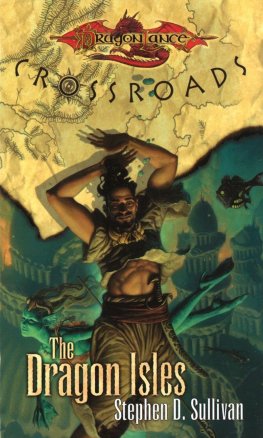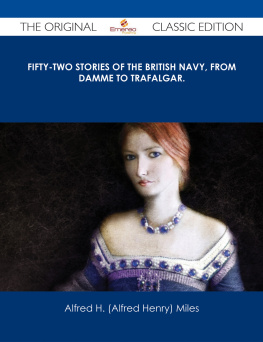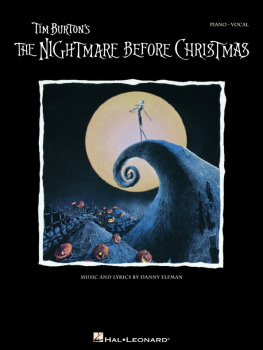Danny Sullivan - Ley Lines
Here you can read online Danny Sullivan - Ley Lines full text of the book (entire story) in english for free. Download pdf and epub, get meaning, cover and reviews about this ebook. year: 2011, publisher: Green Magic
Romance novel
Science fiction
Adventure
Detective
Science
History
Home and family
Prose
Art
Politics
Computer
Non-fiction
Religion
Business
Children
Humor
Choose a favorite category and find really read worthwhile books. Enjoy immersion in the world of imagination, feel the emotions of the characters or learn something new for yourself, make an fascinating discovery.

- Book:Ley Lines
- Author:
- Publisher:Green Magic
(first published May 1st 2004) - Genre:
- Year:2011
- Rating:5 / 5
- Favourites:Add to favourites
- Your mark:
- 100
- 1
- 2
- 3
- 4
- 5
Ley Lines: summary, description and annotation
We offer to read an annotation, description, summary or preface (depends on what the author of the book "Ley Lines" wrote himself). If you haven't found the necessary information about the book — write in the comments, we will try to find it.
Ley Lines — read online for free the complete book (whole text) full work
Below is the text of the book, divided by pages. System saving the place of the last page read, allows you to conveniently read the book "Ley Lines" online for free, without having to search again every time where you left off. Put a bookmark, and you can go to the page where you finished reading at any time.
Font size:
Interval:
Bookmark:
Danny Sullivan
Green Magic
Ley Lines: The Greatest Landscape Mystery# 2004 by Danny Sullivan.
All rights reserved
No part of this book may be used or reproduced in any form without written permission from the author except in the case of quotations in articles and reviews
This edition is published by Green Magic
The Long Barn
Sutton Mallet
Somerset
TA7 9AR
Typeset by Academic Technical, Bristol Printed and bound by Antony Rowe Ltd.
Cover photograph and design by Chris Render
Cover photograph by kind permission of Sue Render
Cover production by Tania Lambert ISBN 0 9542 9634 6
Chapter 1
Chapter 2
Chapter 3
Chapter 4
Chapter 5 Right On, Straight On:
The importance and meaning of the straight line 65
Chapter 6
Chapter 7
Endword: Where Do I Go From Here? 143
iii This book is dedicated to the memory of my father, Daniel John Sullivan
Plate 1 : Danny Sullivan; Plate 2: Danny Sullivan; Plate 3: Photo Vivians of Hereford, courtesy of Hereford County Library; Plate 4: Detail from The Prospect Before Us by the Albion Dance Band from an original painting by William Dudley; Plate 5: Photo Alfred Watkins, courtesy of Hereford County Library; Plate 6: Photo C. Carr-Gomm, courtesy of Hereford County Library; Plate 7: Tony Morrison, courtesy of South American Pictures; Plate 8: Tony Morrison, courtesy of South American Pictures; Plate 9: Danny Sullivan; Plate 10: Danny Sullivan; Plate 11: John Palmer; Plate 12: John Palmer; Plate 13: Danny Sullivan; Plate 14: Danny Sullivan.
Page 177, Three menhirs at Oppagne: John Palmer; page 194, Loanhead of Daviot: Jeff Saward; page 197, Merrivale stone rows: Bryan Bing.While every effort has been made to trace all copyright holders, we apologise to any holders not acknowledged
v
You could say that this book has been 30 years in the making, as during that time many people have inspired and encouraged me to pursue the line of enquiry that led to this publication. Notable participants have been Graham Moss and Charles Dunnett, who first introduced me to the theories of Alfred Watkins in 1974; Tim Whittaker for giving me a copy of The Old Straight Track the following year (which I still have); John Michell for The View Over Atlantis; Roger Cudby, who encouraged the formation of Glou cestershire Earth Mysteries Group in 1987 which led to my introduction to the Earth Mysteries small press; Philip Burton for his generous support of my Earth Mysteries magazine3rd Stonein penurious times; Paul Devereux for his inspiration and belief in me, and for putting The Ley Hunter in my hands; Lionel Stanbrook for the idea and his persistence, drive, commitment and help with the planning and construction of this book; and my long-suffering wife Jo, for her patience, determination, the relentless pursuit of a publishing deal, and for wielding a sharp pen here and there when it mattered.
Special thanks also go to John Palmer, Ulrich Magin, Phil Quinn, Jeff Saward, Eugene Zimmer, Brian Hoggard, Laurence Main, Gerald Frawley, Dewi Bowen, Gordon McLellan, Dave and Lyn Patrick, Paul Bennett, Brian Larkman, Michael Dames, Chris Castle, David Olmen, Martin Brennan, Ron Fletcher, Alfred Woodward and Wayne Perkins, for correspondence and contributions here and there, and for doing the work that kept ley hunting alive in its manifold forms over the last 35 years or so, and whose contribution to the subject has formed the bedrock of this book.
Thanks too to John Palmer, Jeff Saward, Brian Byng and Tony Morrison for permission to reproduce their illustrations, and to Mr Robin Hill of Hereford City Library for permission to reproduce material from the archive of the Straight Track Postal Portfolio Club.
viThis book was originally conceived as the first of a three-part campaign by Lionel Stanbrook and myself to re-launch ley hunting as a popular pastime following the demise of The Ley Hunter Journal and the melting pot of alternative ideas about our distant past that once coagulated around it. The second part of the campaign was to bring the subject of ley hunting to the notice of the general public through major articles in the popular press and sound bites on national radio, which was moderately successful, and the third and conclusive part was the formation and launch of The Society of Ley Hunters, conceived to provide a serious forum for discussion of leys and related subjects and the sharing and dissemination of research and ideas. The society was launched in 2001. Both Lionel, an important influence on the shape and form of the book you are now reading, and I made it our mission to restore ley hunting to popular consciousness and rescue it from the muddy backwaters into which it had fallen following the factionalism and infighting that had invaded the subject in the late 1990s. The jury is still out on this one.
The agenda of the movers and shakers of earth mysteries research had always been to challenge establishment attitudes to our shared ancient heritage and by the mid-nineties significant inroads had been made into academe. Largely due to the influence of young researchers and the archaeological student body who had grown up with books of the likes of John Michell and Paul Devereux and magazines like The Ley Hunter. Ironically one of the results of this apparent success was the demise of the old guard. The front line research and development of ideas became the territory of the new turks of archaeology and
vii anthropology and without the academic discipline or the modern tools of research the ragbag of ley hunters, geomants, pagans and earth mystics, which never had much of a constituency to begin with, began to fall apart. The major victim of this dissaray in the ranks was the closure of The Ley Hunter, the flagship journal of earth mysteries, after nearly thirty years in publication and the rise of the more academically inclined 3rd Stone magazine. Despite my disappointment at the loss of The Ley Hunter I am proud to say that I had a hand in both publications, being both the last editor of The Ley Hunter and the founder of 3rd Stone.
Saddened by the loss of the innocence of the original ley hunting revivalists of the 1960s Lionel Stanbrook and I set about rehabilitating Alfred Watkins, the celebrated discoverer of leys, or leylines, in the 1920s with the writing of this book. While The Society of Ley Hunters is still alive, Ley Lines remains as a testament to Alfred Watkins and the ideas that emerged from his heretical and groundbreaking discovery. I am delighted that Peter Gotto from Green Magic Publishing was sufficiently enthused by the original book to prevent it from becoming a quaint curio by republishing it in a revised and updated form. It gives me the opportunity to correct some errors and to bring one or two loose ends to a satisfactory conclusion. I hope it captures something of the excitement of discovering the work of Watkins and other freethinkers that I felt when I was introduced to The Old Straight Track some thirty years ago.
viii
My interest in prehistory, and megaliths in particular, can be traced to a casual visit to Stonehenge in 1969. My memory of first seeing the stones appear on the horizon of Salisbury Plain as we approached the site from the main road on that dismal summer afternoon has persisted down the years. While I wandered among the stones (you could still do that in those days) preparations were under way to publish a book that would ignite a popular interest in the mysteries of our prehistoric past. That book was The View Over Atlantis by John Michell, the very book that I borrowed from a student colleague five years later as I started out on my academic career at Nottingham University. I became intrigued by the idea of leys and quickly devoured the few books then available on the subject. My friends were equally enthusiastic in those early years and we spent many an hour tracking leys across the Derbyshire moors, making frequent visits to stone circles and eventually spending long hours in Wiltshire dangling pendulums and pointing dowsing rods crafted from wire coat-hangers, over and around standing stones.
Font size:
Interval:
Bookmark:
Similar books «Ley Lines»
Look at similar books to Ley Lines. We have selected literature similar in name and meaning in the hope of providing readers with more options to find new, interesting, not yet read works.
Discussion, reviews of the book Ley Lines and just readers' own opinions. Leave your comments, write what you think about the work, its meaning or the main characters. Specify what exactly you liked and what you didn't like, and why you think so.







